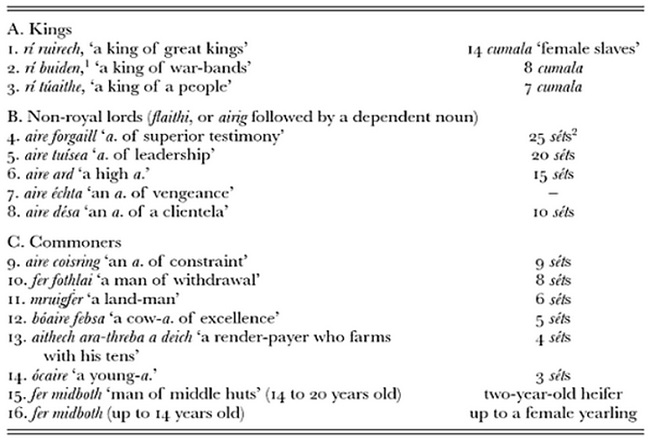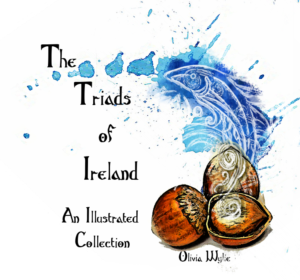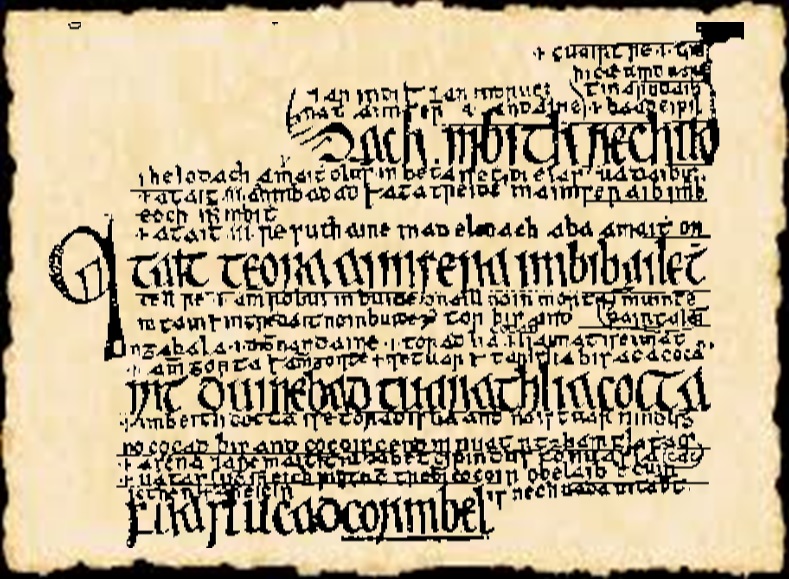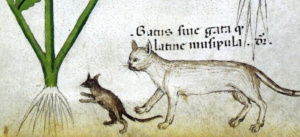Written around 700 AD the Crith Gablach, which means ‘branched purchase’, set out the principle guidelines that should be aspired to in an ideal society.
Ancient Ireland could be described as a renter economy with a carefully defined social hierarchy. Status was determined by one’s ancestry, their personal merit or skill, and the wealth they had acquired. In this way a man who was born into a lower social position as a Céile, for example, could potentially raise their social position to that of a Bó Aire by acquiring enough property that he could now rent out to others with less. However, the process of officially changing social grade required three generations.
This meant that one could only claim the same status as his grandfather, or, to consider someone starting out on the process of climbing the social ladder, his son and grandson would need to maintain the same level of wealth that position required.
It should be noted that it gives guidelines for an ‘ideal society’ and is not necessarily an image of how Irish society actually was but rather what should be aspired to.
Like the Uraicecht Becc, the Crith Gablach details varying lay-grades along with their corresponding honour prices; ranging from a rí ruirech or ‘king of great kings’ at the top whose honour price is listed as fourteen female slaves (cumala), to a fer midboth or ‘man between huts’ whose honour price was listed at one female calf (dairt) or one two-year-old heifer depending on the age of the fer midboth.
The table below is taken from the Crith Gablach. Note that a sét (pr. ‘shet’ or ‘shade’) refers to a milch cow and 1cumala was equal to 3 séts.




